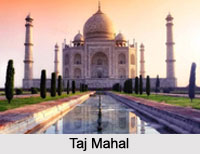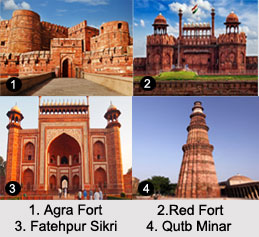 World Heritage Monuments in North India bear the witness to the fact of romance, chivalry, loyalty, deceit, contrive, camaraderie, etc are beautifully spun around. Indian cities like Agra, Delhi and others are sprinkled with several such historical and religious Indian monuments. The cultural importance associated with these sites has led to their enlistment in the UNESCO World Heritage sites.
World Heritage Monuments in North India bear the witness to the fact of romance, chivalry, loyalty, deceit, contrive, camaraderie, etc are beautifully spun around. Indian cities like Agra, Delhi and others are sprinkled with several such historical and religious Indian monuments. The cultural importance associated with these sites has led to their enlistment in the UNESCO World Heritage sites.
Different World Heritage Monuments of North India
Following are the World Heritage Monuments in North India which are world famous:
Agra Fort: Agra Fort is standing tall on the banks of river Yamuna which was created by the Great Mughal Emperor Akbar in the city of Agra. This fort was declared a world heritage site by UNESCO.
Taj Mahal: This white marble grave is the bright model of the endless love of Shah Jahan and Mumtaz Mahal. Taj Mahal is not just a bright example of stunning art and outstanding architecture, but a monument of love and faith.
 Red Fort: Red Fort is a UNESCO World Heritage Site. The red sandstone edifice is not just a major attraction of India`s Independence Day celebrations but is one of the major Mughal structures built by Emperor Shah Jahan.
Red Fort: Red Fort is a UNESCO World Heritage Site. The red sandstone edifice is not just a major attraction of India`s Independence Day celebrations but is one of the major Mughal structures built by Emperor Shah Jahan.
Fatehpur Sikri: Prominently recognized as the former capital built by Akbar the Great; forgotten by time, this wonderful city is still among one of the most visited monuments in India as well as a major venture from Agra.
Humayun`s Tomb: Humayun`s widowed Queen Haji Begum built the Tomb, in the 16th century AD. Architecturally the forerunner of the Taj Mahal, it stands in Nizamuddin, which shows the Mughal architecture at its best.
Qutb Minar: It was counted under the UNESCO World Heritage List for its exclusive depiction of the Islamic architectural and creative excellence.
Jantar Mantar: It has been celebrated as cultural property on the UNESCO World Heritage List. It was built by Maharaja Jai Singh II at his then new capital of Jaipur between 1727 and 1734.
Capitol Complex: Capital Complex of Chandigarh was known as a World Heritage Site as part of exceptional gift to Modern Movement. This was an element of Le Corbusier"s work, which he did in 17 countries in the first half of 20th century.
Hill Forts of Rajasthan: One of the current additions to the list of World Heritage Sites in India (2013), this place is well-known for its exclusive Rajput Military Defense Architecture. It includes six majestic forts in Chittorgarh, Kumbhalgarh, Ranthambore Fort, Gagron Fort, Amber Fort and Jaisalmer Fort. They"re located on the rocky Aravalli Mountain Range in Rajasthan.




